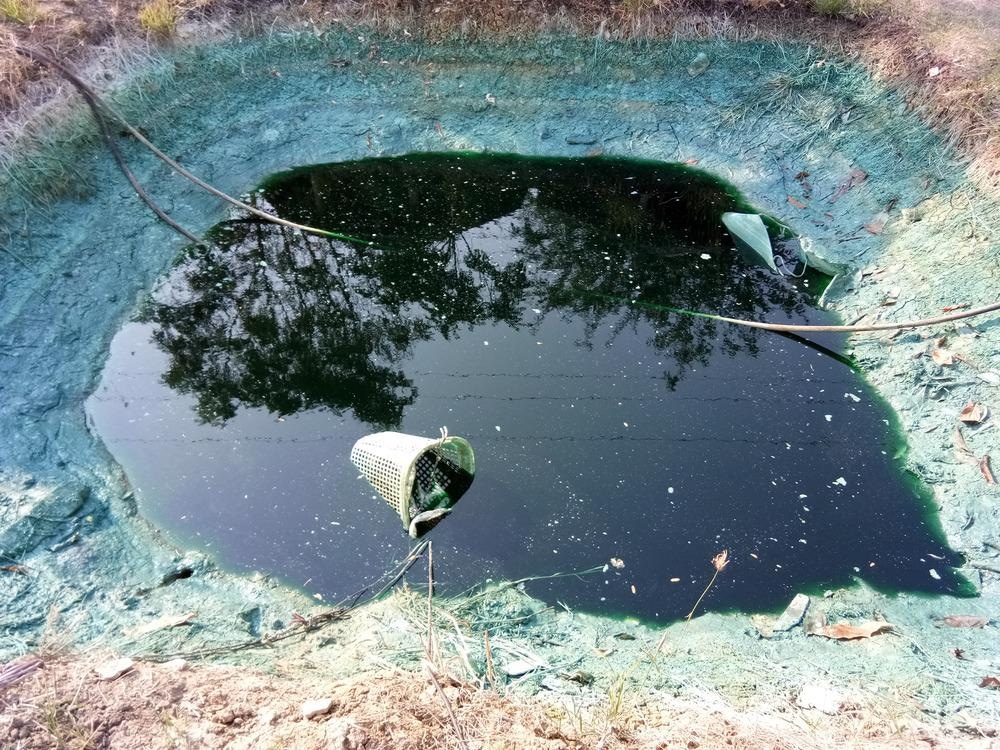 By Surbhi JainReviewed by Susha Cheriyedath, M.Sc.Mar 15 2022
By Surbhi JainReviewed by Susha Cheriyedath, M.Sc.Mar 15 2022In a review recently published in the open-access journal Energies, researchers discussed the recent advances in the development of metal-organic framework (MOF)-derived adsorbents and their utility for the removal of dye from the aquatic environment.

Study: Recent Advances in MOF-Based Adsorbents for Dye Removal from the Aquatic Environment. Image Credit: Kanghophoto/Shutterstock.com
Water is the most important element for life on the planet. Water pollution and scarcity are major environmental issues all around the world. Dyes are one of the most hazardous pollutants in water resources. As a result, dye-contaminated wastewater must be treated before being discharged into the environment.
For treating dye wastewater, adsorption technology has been presented as a popular, low-cost, efficient, simple, and quick solution. Finding new adsorbents or modifying current adsorbents to achieve better adsorption conditions and higher adsorption capacity has long been a priority in this field. For dye removal applications, MOFs have been presented as high-performance adsorbents.
MOFs have remarkable characteristics that can improve the performance of separation over current commercial adsorbents, and so these materials represent a significant step forward in enhancing dye removal from water treatment systems.
About the Study
In the present study, the authors discussed the recent advancements made in the customization of MOF structures for the removal of dye from the aquatic environment. This review presents the synthetic methodologies used to improve adsorption efficiency, as well as the primary adsorption mechanisms and the most important parameters in the adsorptive dye removal using MOFs. The enhanced performance of separation of MOF-based adsorbents was also described.
The team determined the impact of the addition of different functional groups and nanomaterials to MOFs, such as amine functional groups, carbon-based materials, and magnetic nanoparticles like CNT and graphene oxide, on the dispersion in water, water stability, interactions between the contaminant and the MOF structure, and adsorption capacity. The issues that MOF-based materials face when it comes to dye removal from water, as well as the potential future research directions were also discussed.
The properties of optimized and bare MOFs in the adsorptive dye removal were illustrated, and the properties and performance of MOFs as adsorbents, as well as recent advances in dye removal from aquatic environments using zeolitic imidazolate frameworks (ZIFs), zirconium-based MOFs, amine-functionalized MOFs, magnetic MOFs, and carbon nanotube (CNT)-MOF and graphene oxide (GO)-MOF nanocomposites, were demonstrated. Furthermore, the effects of pH, adsorbent dose, contact time, and initial dye concentration on dye removal using MOFs were explored.
Observations
The maximal capacities for methylene blue (MB), basic blue (BB) 41, and BB46 adsorption were 862, 1257, and 1296 mg/g, respectively. The adsorption capacity at equilibrium (qe) of MB by Fe3O4@MIL-100(Fe) was found to increase from 28 mg/g to 42 mg/g when the pH was increased from 2 to 9.
For AO7 adsorption, the greatest capacity found for UiO-66, NH2-UiO-66, CNT/UiO-66, and GO/UiO-66, respectively, was 42.6, 55, 80.6, and 66.198 mg/g. For AY17 adsorption, the greatest capacity obtained for UiO-66, NH2-UiO-66, CNT/UiO-66, and GO/UiO-66, respectively, was 22.3, 81.8, 86.4, and 63.2 mg/g, respectively. The addition of 5% (w/w) GO to MOF increased the adsorption capacity from 1019 mg/g to 1231 mg/g for MB and from 667 to 1189 mg/g for methyl orange (MO).
More from AZoM: Lithography Machines and the Chip-Making Process
Because of the increase in active adsorption sites, the removal efficiency of MB and malachite green (MG) was increased by 94.6% and 93.8%, respectively, when the adsorbent dosage was increased. The elimination efficiency of MB using UiO-66 increased from 30% to 70% when the initial UiO-66 dosage increased from 0.1 to 0.5 g/L. When the MIL-100(Fe) dosage was increased from 1 to 50 mg, the percentage of methyl blue and MB adsorption was enhanced by 65–80 percent and 75–99%, respectively.
MOF-based sorbents were used to remove dyes such as methyl orange, MB, acid orange 7, Congo red, MG, acid red 1, acid chrome blue K, methyl red, orange G, BB 41, neutral red, rhodamine B, safranine T, eosin, fuchsin basic, fuchsin acid, alizarin red S, xylene orange, reactive black 5, etc.
Conclusions
In conclusion, this review elucidated that the most investigated structures in dye removal applications are material institute Lavoisier (MIL)-type MOF structures with customizable features for selective adsorption, zirconium-based MOFs with outstanding stability in acidic and aqueous acidic conditions, and ZIF structures with high adsorption capacity and high surface area.
Amine-functionalized MOF structures can improve electrostatic interactions and hydrogen bonds between the adsorbent framework and dye molecules in order to increase adsorption capacity. The use of graphene–MOF composites could improve electrostatic and π–π interactions, which can increase adsorption capacity. The authors emphasized that due to their sandwich-shaped architectures and the inclusion of graphene in the structure, these composites have high thermal stability.
Disclaimer: The views expressed here are those of the author expressed in their private capacity and do not necessarily represent the views of AZoM.com Limited T/A AZoNetwork the owner and operator of this website. This disclaimer forms part of the Terms and conditions of use of this website.
Source:
Beydaghdari, M., Saboor, F. H., Babapoor, A., et al. Recent Advances in MOF-Based Adsorbents for Dye Removal from the Aquatic Environment. Energies 15(6), 2023 (2022). https://www.mdpi.com/1996-1073/15/6/2023